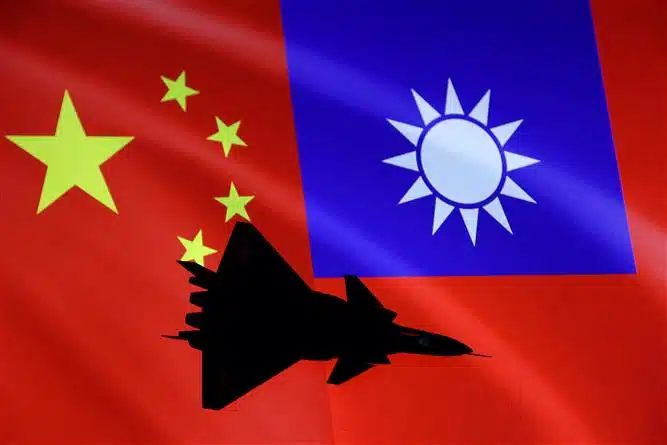The United States recently authorized the potential sale of $619 million worth of weapons to the island, including advanced missiles for Taiwan’s F-16 fighter jets.
However, Taiwan has reported a large-scale Chinese air force intrusion into its air defense zone for the second day in a row.
Taiwan’s defense ministry reported on Thursday that a total of 21 Chinese combat aircraft entered the island’s air defense identification zone (ADIZ), including 17 Chengdu J-10 multirole fighters as well as four modern Shenyang J-16 assault fighters.
Since about three years ago, Taiwan, which China claims is its territory, has voiced complaints about increased military exercises near the island as Beijing tries to bolster its claims to sovereignty. Despite the outrage this generates in Taipei, China has claimed that its actions in the region are justified because it wants to protect its national sovereignty and caution the U.S. against “colluding” with Taiwan. Following a map the ministry published, the aircraft had flown into the southwest corner of Taiwan’s air defense identification zone.
Using the standard language for its reaction to such Chinese incursions, the ministry added that Taiwan’s forces monitored the situation and sent up its air force planes.
The aircraft did not, however, cross the delicate Taiwan Strait median line, which China’s air force has been hovering over almost every day since conducting war simulations close to Taiwan last August and which had earlier functioned as an informal boundary between the two parties.
Thus, Chinese aircraft were operating in Taiwan’s ADIZ, not its territorial air space, and no shots were discharged. Taiwan monitors and patrols a larger region known as the ADIZ, which gives it more time to react to any threats.
The legally elected Taiwanese government has repeatedly offered to hold dialogues with China, but it maintains that only the Taiwanese people have the power to determine Taiwan’s destiny and that the island will resist itself if invaded.
Based on a map of the incident published by the ministry, the J-16s, a much relatively new and more sophisticated fighter, flew in an area to the northeast of the Taiwan-controlled Pratas Islands whereas the J-10s, an older fighter design that first began operating twenty years ago, flew nearer to the Chinese coast than Taiwan’s.
The defense ministry stated that Taiwan’s armed forces were keeping an eye on the situation and had assigned CAP (combat air patrol) aircraft, Navy vessels, and ground missile systems to react to these movements.
In the previous 24 hours, 19 Chinese air force combat aircraft had infiltrated the air defense zone, according to Taiwan’s report on Wednesday.
In response to the increased pressure from China, Taiwan has upgraded its fleet of F-16 fighter jets, ordered 66 more from the US, purchased a variety of other weapons, and increased the four-month military duty requirement for all males to one year.













